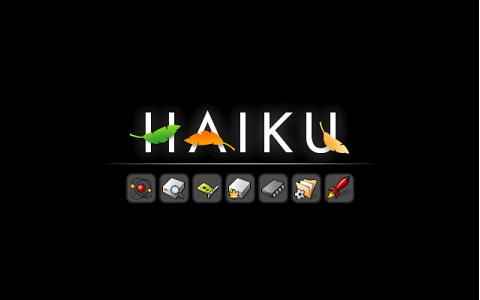Cargador de arranque
El cargador de arranque de Haiku puede ayudarle cuando experimente problemas de hardware o quiera elegir qué instalación de Haiku quiere iniciar, si dispone de más de una (seguramente en un CD de instalación o unidad USB).
También viene muy bien para cuando ha instalado algún componente de software que actúa previniendo el arranque del sistema. para desinstalarlo. La opción Disable user add-ons (Deshabilitar los add-ons de usuario) que se menciona mas abajo, iniciará Haiku sin cargar nunguno de los componentes instalados por el usuario, por ejemplo, un controlador.
Para visualizar las opciones del cargador de arranque, hay que mantener presionada la techa SHIFT (de mayúsculas) antes del comienzo del proceso de arranque de Haiku. En de haber un administrador de arranque instalado, empiece a presionar la tecla antes de seleccionar Haiku desde el mismo. Si Haiku es el único sistema operativo instalado, empiece a presionar la tecla mientras se viualizan los mensajes de arranque del BIOS.
 Boot Loader Options
Boot Loader Options
Una vez allí, se le ofrecerán tres menús:
| Seleccionar volumen de arranque | Elija qué instalación de Haiku desea iniciar. | |
| Select safe mode options | There are several options to try in case of hardware related trouble or if the system becomes unstable or unbootable because of a misbehaving add-on. When moving the selection bar to an option, a short explanation appears at the bottom of the screen. | |
|
| ||
| Select debug options | Here you'll find several options that help with debugging or getting details for a bug report. Again, a short explanation for each option is displayed at the bottom. | |
|
| ||
| If "Enable debug syslog" is activated, a warm reboot after a crash shows these additional options: | ||
|
| ||
| Seleccionar modo de vídeo a prueba de fallos | Si activó la opción Utilizar modo de vídeo a prueba de fallos, puede configurarse la resolución y la profundidad de color. |
 Troubleshooting
Troubleshooting
If Haiku refuses to boot on your hardware from the get-go, try out setting different options under . Consider filing a bug report in any case.
On the other hand, if Haiku only suddenly acts up after you have installed some software, especially hardware drivers, you have several options to get Haiku bootable again to make things right by uninstalling the offending package again:
Activating will prevent most servers, daemons and the UserBootScript from being started.
Activating will prevent using any add-ons (drivers, translators, etc.) you have installed in the user hierarchy under your Home folder.
If the offending driver, add-on etc. is installed in the system hierarchy, things get a bit more complicated, because that area is read-only. Here, the comes into play. With it, you can navigate through the whole system hierarchy and disable the component that's messing things up for you by checking an entry with the SPACE or RETURN key. ESC returns you up one level to the parent directory.
Online, there's the article How to Permanently Blacklist a Package File showing how to make that setting stick.
 Booting Haiku
Booting Haiku
Tras activar una o más opciones, puede regresar de nuevo al menú principal y continuará iniciando, lo cual se presentará con esta pantalla de arranque:

Si todo funciona bien, se deben iluminar un símbolo tras otro rápidamente.
Los deferentes símbolos se corresponden con estas etapas de inicio:
| Átomo | Iniciando módulos. | |
| Disco y lupa | Creando rootfs (/) y montando devfs (/dev). | |
| Tarjeta plug-in | Iniciando gestor de dispositivos. | |
| Disco de arranque | Montando disco de arranque. | |
| Chip | Cargando módulos específicos de CPU. | |
| Carpeta | Inicialización final de subsistemas. | |
| Cohete | Script de arranque iniciando el sistema. |
 Español
Español Français
Français Deutsch
Deutsch Italiano
Italiano Русский
Русский Svenska
Svenska 日本語
日本語 Українська
Українська 中文 [中文]
中文 [中文] Português
Português Suomi
Suomi Slovenčina
Slovenčina Magyar
Magyar Português (Brazil)
Português (Brazil) Català
Català Polski
Polski English
English